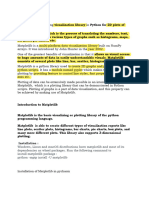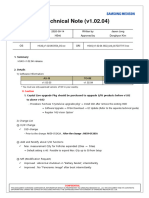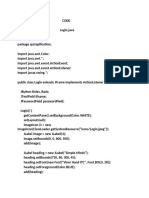0% found this document useful (0 votes)
4 views61 pagesMat Plot Lib
The document provides a comprehensive guide on installing and using the Matplotlib library for data visualization in Python. It covers various plotting functions, including line plots, bar charts, histograms, and pie charts, along with examples of how to implement them. Additionally, it discusses customization options such as titles, labels, grid settings, and colors.
Uploaded by
divyanshupanchasaraCopyright
© © All Rights Reserved
We take content rights seriously. If you suspect this is your content, claim it here.
Available Formats
Download as PDF, TXT or read online on Scribd
0% found this document useful (0 votes)
4 views61 pagesMat Plot Lib
The document provides a comprehensive guide on installing and using the Matplotlib library for data visualization in Python. It covers various plotting functions, including line plots, bar charts, histograms, and pie charts, along with examples of how to implement them. Additionally, it discusses customization options such as titles, labels, grid settings, and colors.
Uploaded by
divyanshupanchasaraCopyright
© © All Rights Reserved
We take content rights seriously. If you suspect this is your content, claim it here.
Available Formats
Download as PDF, TXT or read online on Scribd
/ 61
























































































